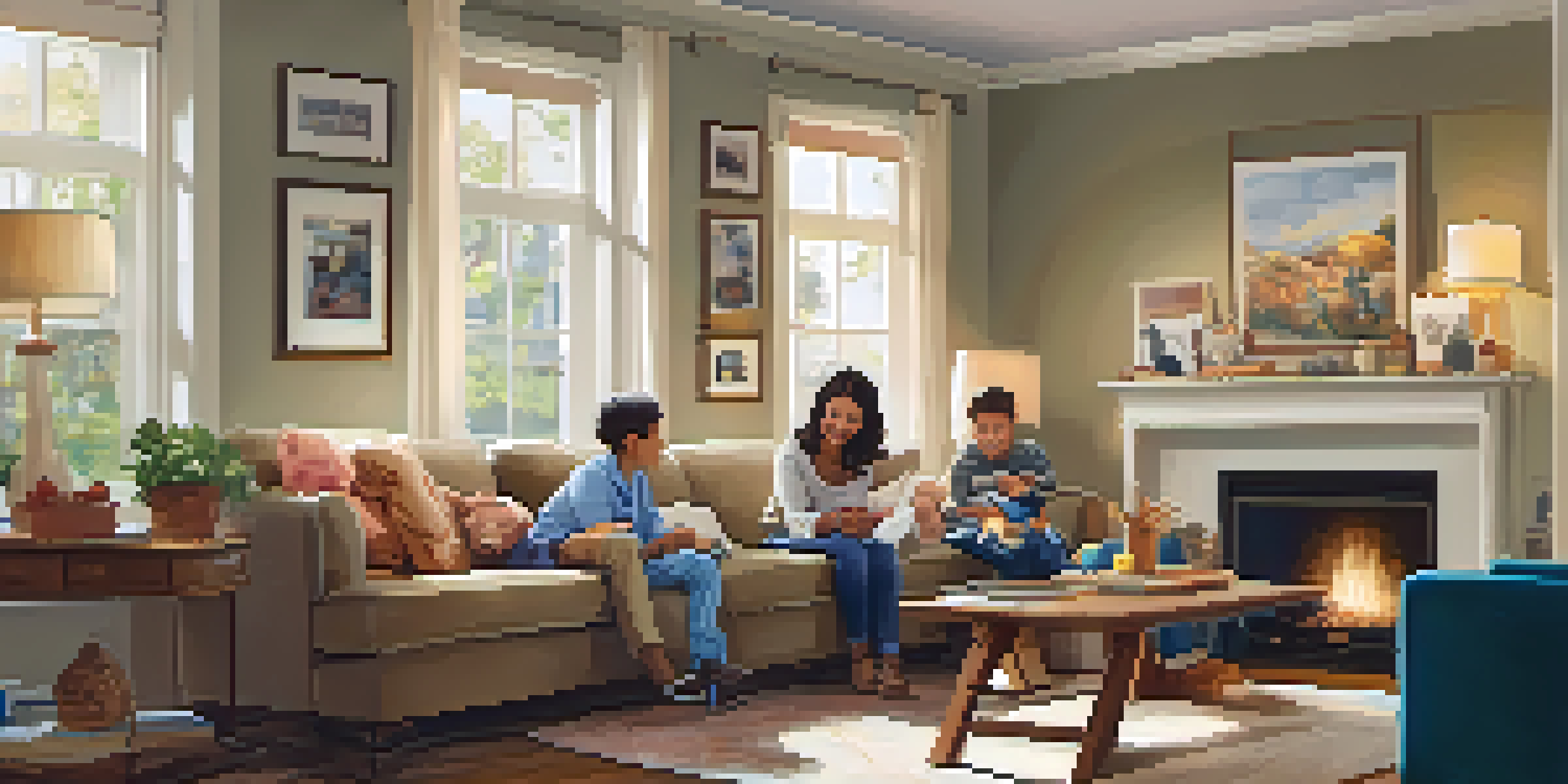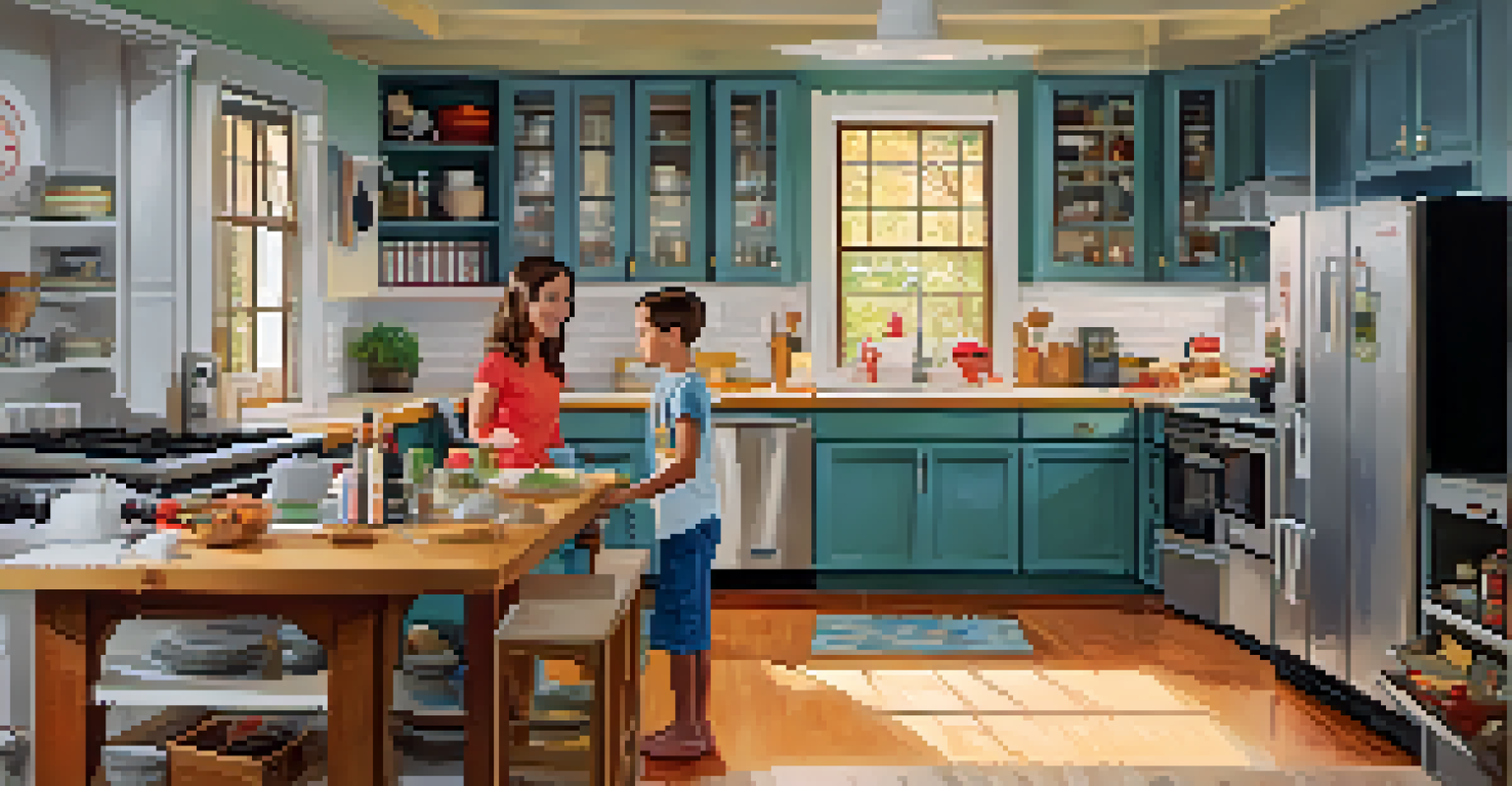Creating a Safe Space: Home Safety Tips for Everyone

Understanding the Importance of Home Safety
Home safety is not just a luxury; it's a necessity that protects us from potential harm. Every year, countless accidents occur in homes, making it crucial to prioritize safety measures. By acknowledging the importance of a safe living environment, we can prevent mishaps and ensure peace of mind for ourselves and our families.
Safety isn't just a gadget, it's a state of mind.
Think of your home as a fortress; it should be a place where you feel secure and comfortable. Just as a fortress has walls to keep intruders out, your home needs safety features that act as barriers against accidents and emergencies. A little preparation can go a long way in creating a sanctuary where you can relax without worry.
Moreover, safety isn’t just about physical barriers; it’s also about being prepared for emergencies. Having a plan and knowing what to do in case of fire, flood, or other crises can make all the difference. Embracing a proactive approach to home safety can transform your space into a true haven.
Conducting a Home Safety Assessment
The first step in enhancing home safety is conducting a thorough assessment. Walk through each room and identify potential hazards, such as loose cords, uneven flooring, or inadequate lighting. By taking a closer look at your environment, you can pinpoint issues that may be easily overlooked but could lead to accidents.

Consider using a checklist to make this process more systematic. Note down areas that need attention and prioritize them based on urgency. For instance, if you notice that your stair railing is loose, it should be addressed before minor issues like organizing clutter in the living room.
Prioritize Home Safety Measures
Implementing safety features protects against accidents and creates a secure environment for families.
Involving your family in this assessment can also be beneficial. Encourage open discussions about safety concerns, allowing everyone to share their thoughts and experiences. This collaborative approach can lead to a more comprehensive understanding of your home's safety needs.
Implementing Fire Safety Measures
Fire safety is a crucial aspect of creating a secure home. Start by installing smoke detectors on every level of your home and testing them monthly to ensure they work correctly. These simple devices are your first line of defense against fire, providing early warning that can save lives.
An ounce of prevention is worth a pound of cure.
Next, develop a fire escape plan that outlines the safest routes out of your home. Practice this plan with your family regularly, so everyone knows what to do in case of an emergency. Having a designated meeting spot outside can also help ensure everyone is accounted for.
Lastly, be mindful of potential fire hazards, such as overloaded outlets or leaving cooking unattended. Small changes in your daily habits can significantly reduce the risk of fire, making your home a safer place for everyone.
Securing Your Home Against Intruders
Home security is about more than locking doors; it's about creating an environment that deters intruders. Start by installing sturdy locks on all windows and doors, and consider using deadbolts for added protection. These measures can make a significant difference in keeping your home secure.
Consider investing in a security system that includes cameras, alarms, and motion sensors. Modern technology offers various options, from smart home devices to traditional security systems, providing peace of mind that your home is being monitored. Just knowing you have a system in place can deter potential intruders.
Conduct Regular Safety Assessments
Regularly evaluating your home for hazards allows you to address potential risks proactively.
Finally, remember that simple actions can enhance your home's security. For instance, keeping your outdoor area well-lit and free of hiding spots can make a big difference. Additionally, getting to know your neighbors fosters a community watch approach, making everyone more vigilant.
Childproofing Your Home for Safety
If you have children, childproofing your home is essential to prevent accidents. Start by securing heavy furniture, like bookshelves and dressers, to the wall to prevent tipping. This simple step can protect your little ones from serious injuries as they explore their surroundings.
Next, be mindful of small objects that can pose choking hazards. Keep items like coins, batteries, and small toys out of reach, and regularly check toy boxes for broken pieces. Teaching your children about safety can also empower them to recognize potential dangers in their environment.
Lastly, install safety gates at stairways and use outlet covers to prevent electrical accidents. By taking these proactive steps, you can create a safer environment for your children to grow and learn without unnecessary risk.
Creating a Safe Kitchen Environment
The kitchen is often considered the heart of the home, but it can also be a hotspot for accidents. To create a safe kitchen, start by keeping sharp knives and tools out of reach of children and using cutting boards to prevent slips. A well-organized kitchen not only enhances efficiency but also minimizes the risk of accidents.
Additionally, always supervise cooking activities, especially when using hot surfaces or boiling liquids. Accidents can happen in an instant, so having someone present can help prevent mishaps. Teaching older children about kitchen safety can also encourage them to be responsible while cooking.
Prepare for Emergencies Effectively
Having an emergency kit and a communication plan ensures your family is ready for unexpected situations.
Lastly, keep a fire extinguisher in or near the kitchen and know how to use it. Regularly check that it’s in working order and that everyone in the household knows its location. These precautions can make your kitchen a safer space for culinary creativity.
Ensuring Bathroom Safety for Everyone
Bathrooms can be slippery and hazardous, making safety a priority in these spaces. Start by placing non-slip mats in and around the tub or shower to prevent falls. These simple additions can significantly reduce the risk of accidents, especially in households with children or older adults.
Consider installing grab bars in the shower and next to the toilet for added support. These bars provide stability and can be a lifesaver for those who may struggle with balance. It's a small investment that can make a big difference in ensuring everyone feels secure in the bathroom.

Lastly, keep personal care products out of reach of young children and ensure that medications are stored securely. By being mindful of these details, you can create a bathroom environment that prioritizes safety for everyone in your home.
Emergency Preparedness: Be Ready for Anything
Creating a safe home extends beyond daily safety measures; it also involves being prepared for emergencies. Start by assembling a family emergency kit that includes essential items like water, non-perishable food, flashlights, and a first-aid kit. Having these supplies ready can make a world of difference during unexpected situations.
Next, develop a communication plan that outlines how your family will connect during emergencies. Ensure everyone knows how to reach each other, whether through phone calls, texts, or designated meeting spots. This preparation reduces anxiety and confusion during crises, allowing for a more organized response.
Finally, regularly review and update your emergency plan and kit. Life changes, and so do your needs, so staying proactive in this area is crucial. By preparing for the unexpected, you can create a resilient home that stands strong in the face of challenges.